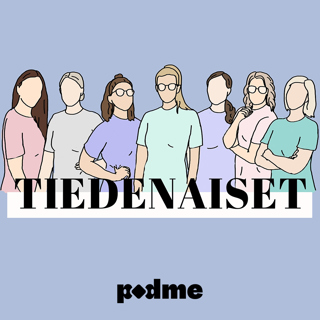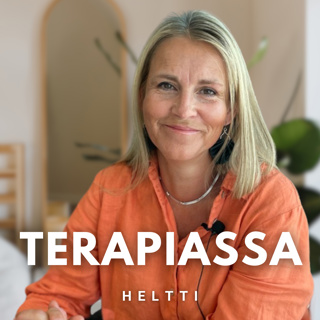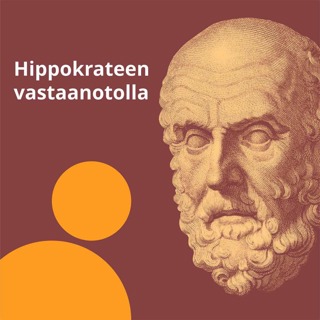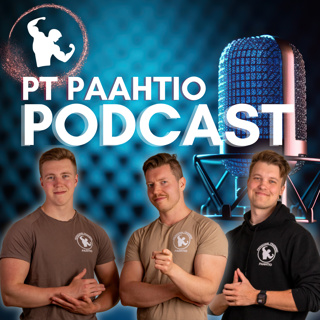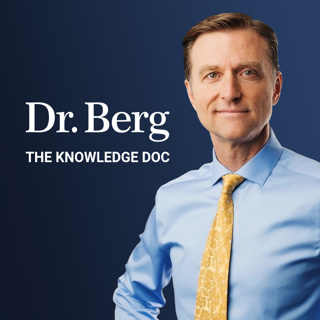
The Truth About this "Healthy" Food
Are gluten-free foods healthy? A “gluten-free” label often seems healthier, but is it? In this video, we’ll discuss some of the common myths about gluten-free products and uncover the truth about gluten-free foods. DATA: https://www.cornucopia.org/hexane-gui... Gluten is the only protein that humans can not digest. Over the years, we’ve added more and more gluten to the diet, which has increased gut inflammation. Just because a food is gluten-free does not make it healthy! Processed gluten-free foods are loaded with seed oils, sugars, and starches. Gluten can destroy the gut, but so can refined starches and sugars. Good bacteria prefer fiber, but bad bacteria thrive on sugar and starches. Consuming processed gluten-free foods can create an overgrowth of harmful bacteria. When bad bacteria breaks down and dies, it releases a toxic byproduct that can lead to inflammation in the liver, a fatty liver, and skin issues like dermatitis. Chemicals, enzymes, and acids are used to remove the gluten from the grain in processed gluten-free foods, creating a more highly refined product. Gluten-free foods are low in protein, which can lead to over-eating. They can also cause SIBO, inflammation, and leaky gut. Gut health directly contributes to your mental health, so this can lead to moodiness, lowered emotions, anxiety, and depression. Read the ingredients in gluten-free products or focus on consuming whole foods like meat and vegetables. If the fiber from vegetables makes things worse, try the carnivore diet for some time.
25 Loka 20247min

The #1 Superfood in the World
Is red meat unhealthy? You’ve probably been taught that red meat causes cancer and other health conditions like type 2 diabetes and heart disease, but did you know that red meat is the #1 superfood? Discover the amazing health benefits of red meat in this video! BOOK LINKS: https://www.amazon.com/Dorito-Effect-... https://www.amazon.com/Mastering-Zone... Today, I’m going to tell you about the #1 superfood, red meat! Some people think green powder is the best superfood, but while it's very beneficial, it’s missing one important ingredient—protein. Green powder has vitamin C, K1, beta-carotene, magnesium, potassium, and phytonutrients but no protein. To optimize your health, you might want to start consuming grass-fed red meat along with your green powder. Red meat is an excellent source of B vitamins, fat-soluble vitamins, iron, selenium, zinc, and DHA. Grass-fed red meat also contains phytonutrients. Red meat increases the antioxidant glutathione and is a potent source of carnosine, an antioxidant that helps prevent glycation. Protein consumption triggers the hormone glucagon, which stabilizes your blood sugar and helps counter the effects of insulin. Grass-fed red meat protein is the best source of protein! A large portion of your body is made of protein. Muscle, collagen, ligaments, tendons, fascia, cell membranes, skin, and bones are all composed of protein. The 74,000 enzymes in your body are proteins, along with your neurotransmitters and hormones. Your blood contains a significant amount of protein, and it's also essential for immune cells. Red meat contains taurine, an amino acid needed to help prevent high blood pressure, and leucine, an amino acid that triggers the synthesis of muscle. Your body can make glucose from protein when necessary. Gluconeogenesis is the production of new glucose, which occurs mainly in the liver. The protein leverage hypothesis states that animals, humans, and insects will continue to eat until they satisfy their protein requirement. This is why you will overeat if you consume junk food—it has no protein! If you have low blood sugar, you should consume protein, not candy! Red meat contains myoglobin, a type of protein that helps carry oxygen. Red meat contains more myoglobin and iron than white meat. Cows, sheep, and goats have a unique ability to concentrate the nutrients from the grass into their meat.
21 Loka 20248min

The MOST Neglected Nutrient By Doctors
Discover the importance of the most neglected nutrient: magnesium! Magnesium can aid in heart attack prevention, support heart health, and improve your overall well-being. Learn more about magnesium deficiency symptoms and why magnesium is vital for cardiovascular health. DATA: https://www.ahajournals.org/doi/full/... Today I want to share some lesser-known heart health tips and how magnesium may help lower heart attack risk. Common heart problems such as plaquing, blood clots, atrial fibrillation, and hypertension are all related to magnesium deficiency. Testing for magnesium deficiency is almost impossible because only 1% is in the blood. The majority of magnesium is inside the cells. Heart medications such as calcium channel blockers, beta-blockers, Warfarin, and medications used to treat high blood pressure work using mechanisms similar to magnesium. Magnesium acts as a natural calcium channel blocker and helps regulate calcium, lower blood pressure, lower adrenaline, and relax the muscles. People deficient in magnesium often feel tired, especially after exercise. They may also experience migraine headaches. Without enough magnesium, vitamin D cannot work. Alcohol, refined sugar, starches, genetics, stress, low stomach acid, drugs, and antibiotics can interfere with the absorption of magnesium. Consuming ultra-processed foods increases your demand for magnesium and could cause you to become deficient. Many sources of magnesium, like spinach, almonds, and chocolate, are high in oxalates. Magnesium glycinate is a great choice for people looking to get more magnesium.
20 Loka 202411min

21 Signs Your Body Needs Specific Nutrients
Over 50% of the population consumes ultra-processed foods, putting them at risk for vitamin and nutrient deficiencies. Many people have a vitamin D deficiency, magnesium deficiency, zinc deficiency, potassium deficiency, or vitamin B1 deficiency and don’t even know it! In this video, I’ll share 21 important signs of vitamin deficiency. 1. Tingling in the toes, also known as peripheral neuropathy, can be caused by a vitamin B1 deficiency. Pork, liver, meat, eggs, and sunflower seeds are the best sources of vitamin B1. 2. Cracks in the corner of the mouth can be caused by a vitamin B2 deficiency. Consume liver, red meat, and eggs to increase vitamin B2 intake. 3. Thinning hair can be caused by a biotin deficiency. Without enough biotin, you can’t make keratin, the protein needed to make hair. 4. Premature graying of the hair can be caused by a vitamin B9 deficiency. Folate (vitamin B9) repairs DNA, helps prevent cancer, and supports melanin production. 5. Mouth ulcers can be caused by a vitamin B12 deficiency. To increase your intake, consume more red meat, liver, and clams. 6. Deep pelvic bone pain can be caused by vitamin D deficiency. 7. Heavy menstrual bleeding can be caused by high estrogen levels or a vitamin K1 deficiency. Dark leafy green vegetables and liver are the best sources of vitamin K1. 8. Heavy menstrual cramping can be caused by calcium buildup due to a magnesium deficiency. Dark leafy green vegetables and pumpkin seeds are the best sources of magnesium. 9. Fibroids can be caused by too much estrogen, but vitamin D can help keep them in check. 10. Eye twitching, also known as tetany, can be caused by a magnesium deficiency. 11. Heart pounding can be caused by a potassium deficiency. You need 4700 mg of potassium per day. 12. Chronic cough can be caused by a calcium deficiency. Calcium lactate is the best calcium supplement. 13. Ice cravings can be caused by iron deficiency. Try increasing your intake of red meat or liver before resorting to supplements. 14. Low libido can be caused by a zinc deficiency. Shellfish, especially oysters, and red meat are the best sources of zinc. 15. Hearing loss can be caused by a vitamin B12 deficiency. 16. Fibrocystic breasts can be caused by excess estrogen, which may result from low iodine. To increase iodine intake, consume sea kelp, seaweed, and shellfish. 17. Dry, flaky skin is a classic sign of omega-3 fatty acid deficiency. For this problem, consume high-quality cod liver oil or fish oil. 18. Muscle weakness can be caused by a vitamin E deficiency. Tocotrienols may help. 19. Fatty liver—choline deficiency can cause a fatty liver. Egg yolk and liver are the best sources of choline. 20. Cold sores can be caused by a virus, but increasing lysine can help put the virus in remission. 21. High lipids can be regulated with the help of niacin (vitamin B3).
19 Loka 202411min

This Is CRAZY!
Take a stand to protect farmers' rights and stop animal EID! Join us at the Rogue Food Conference to help stop mandatory animal ID laws that threaten our rights. Learn more and register here: https://roguefoodconference.com/rfc-tx/ Rogue Food TX Discount: Berg10 https://roguefoodconference.com/come-and-tag-it-help-stop-animal-id/ DATA: https://grist.org/article/in-court-ca... Today, I’m going to interview homesteader John Moody about the bill that involves the electronic identification of livestock. John explains that livestock tracking goes far back in history. It started with branding animals to sort and keep track of cattle, and branding was eventually replaced with ear tags. With the rise of the beef industry, government agencies wanted an electronic way to keep track of all livestock at all times. Like many government programs, this idea was sold under the guise of safety coincidentally as there’s a huge push to get Americans and Western countries to eat less meat. Their efforts have been unsuccessful thus far, which is why they are resorting to EID and RFID electronic identification of animals in an attempt to get farmers to radically reduce their number of livestock. In the early 2000s, the USDA proposed the National Animal Identification System (NAIS), which would require every farmer and homesteader in America to radio-frequency ID tag every single livestock animal they have, including cattle, pork, chickens, lamb, and goats. Confinement animal feeding operations (CAFOs) were exempt. John explains that the USDA does not need a vote to instate the NAIS. They can create rules without needing a law or bill to be passed. Congresswoman Harriet Hageman has created a bill to stop NAIS and has stopped RFID twice in the past. Around 100 years ago, 50% of American households were farming households. That number is now down to only 2 to 3 million farmers in America! You can personally stand up for your farmers! People who were not farmers stopped this program in 2009. Buying your food directly from your farmers is one of the best ways to support them. Call your congressperson and senator, and ask them to support Hageman’s amendment that would prevent the USDA from being able to require RFID tagging on animals of any kind. The Rogue Food Conference organized by Joel Salatin works to organize pushback against regulations that make it difficult for the public to access real food from farmers. The next seminar is happening on November 8th and 9th in Dallas!
18 Loka 202431min

THIS Increases Heart Attack Risk over 2000%
This one trigger can contribute to a heart attack more than any other factor. It also increases the risk of viral infections and autoimmune diseases. Stress, specifically from the loss of a significant person in your life, can significantly increase the risk of a heart attack. Stress can be physical, mental, real, or imagined. Even thinking about a stressful state can affect your body physically. There's acute stress and chronic stress, but both can create similar problems. When you experience stress, your adrenaline and cortisol drastically increase. Adrenaline works very quickly, and cortisol takes time. Chronic stress causes high levels of cortisol, which suppresses your immune system, leaving you more vulnerable to infections. This is why many people develop autoimmune diseases after a stressful event. A stressful event can destroy your immune system, especially the T-regulatory cells. High-intensity interval training is an example of good stress for the body. Rock climbing, sports, woodworking, cleaning, gardening, dancing, music, art, and physical work are all therapeutic forms of stress. Breathing techniques and adaptogens like ashwagandha can help minimize stress and its effects on your heart health. Vitamin B1, magnesium, and acupressure are also beneficial. DATA: https://www.ahajournals.org/doi/full/...
14 Loka 20248min

The BEST Fibroid Shrinking Vitamin (based on science)
Fibroids decrease in size after menopause, yet pregnancy, exposure to HRT, and birth control pills can cause fibroids to enlarge. Obesity, type 2 diabetes, high blood pressure, and PCOS also increase the risk of fibroids. Black women have a 3 to 9 times higher risk of developing fibroids. Estrogen is the primary driver of fibroids and endometriosis. A fibroid is a growth in the uterus, but it differs from uterine tissue in several ways. Fibroids are very sensitive to estrogen and have increased estrogen receptors, more of the enzyme aromatase, less oxygen than the uterus, and more inflammation. Many health problems and risk factors associated with fibroids are related to low vitamin D. Vitamin D has incredible properties that may help inhibit the growth of fibroids. There is also a vast amount of anecdotal evidence in support of using vitamin D to shrink fibroids. Be sure to take vitamin D with the cofactors magnesium and vitamin K2. DATA: https://www.ncbi.nlm.nih.gov/pmc/articles/PMC4209245/ https://pubmed.ncbi.nlm.nih.gov/18423458/ https://pubmed.ncbi.nlm.nih.gov/23467803/ https://pubmed.ncbi.nlm.nih.gov/22302692/ Jeff T. Bowles: The Miraculous Cure for and Prevention of All Diseases - What Doctors Never Learned: https://www.amazon.com/Miraculous-Pre...
13 Loka 202411min

The #1 Ingredient That Makes You Fat (NOT SUGAR)
In this podcast, we’re going to talk about a dangerous ingredient that’s making you fat and damaging your health. The FDA classifies this ingredient as GRAS, which means “generally recognized as safe.” Monosodium glutamate, also known as MSG, is a flavor enhancer. Studies have shown that it causes obesity, diabetes, metabolic problems, and a fatty liver in mice, so how can it be safe for humans? Monosodium glutamate overstimulates a part of the hypothalamus that regulates the balance of hunger and satiation. It prevents the utilization of energy and also affects fertility. The average daily consumption of MSG is 590 mg to 2330 mg. Some people consume up to 5000 mg in one day! Consuming carbs and MSG together accentuates its effects. Not only does MSG contribute to obesity, but it may also cause headaches, allergy symptoms, irritability, sleeping problems, and dizziness. Many people consume hidden MSG unknowingly. If there’s less than half a gram of MSG in a product, it’s not required to be listed as an ingredient! Foods high in monosodium glutamate include the following: •Instant noodles •Chips •Flavored popcorn •Canned soups •Bouillon cubes •Processed meat •Fast food •Seasonings •Salad dressings •Frozen dinners •Gravy •Appetizers •Flavored crackers •Canned vegetables DATA: https://pubmed.ncbi.nlm.nih.gov/557837/ https://pubmed.ncbi.nlm.nih.gov/5093957/ https://www.cambridge.org/core/journa...
12 Loka 20247min



